
How to Use NUCLEO-F439ZI: Examples, Pinouts, and Specs
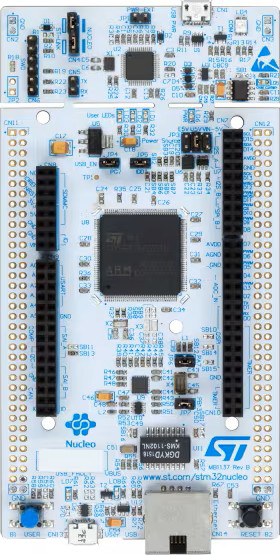
 Design with NUCLEO-F439ZI in Cirkit Designer
Design with NUCLEO-F439ZI in Cirkit DesignerIntroduction
The NUCLEO-F439ZI is a development board manufactured by STMicroelectronics, featuring the STM32F439ZI microcontroller. This microcontroller is based on a 32-bit ARM Cortex-M4 core with a floating-point unit, making it ideal for high-performance embedded applications. The board is designed to provide a flexible and user-friendly platform for prototyping and developing applications, offering a wide range of peripherals such as USB, Ethernet, and multiple I/O interfaces.
Explore Projects Built with NUCLEO-F439ZI
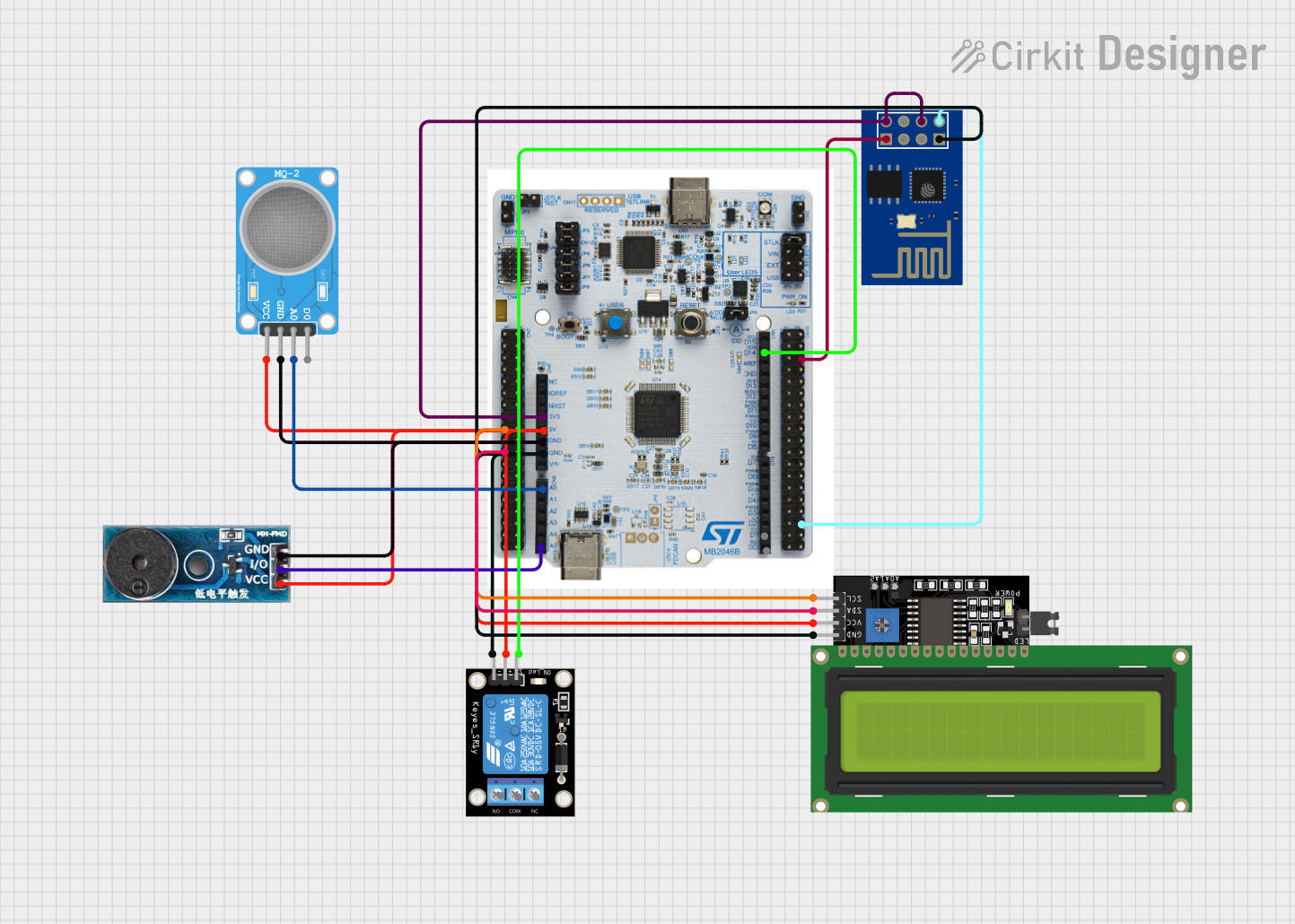
 Open Project in Cirkit Designer
Open Project in Cirkit Designer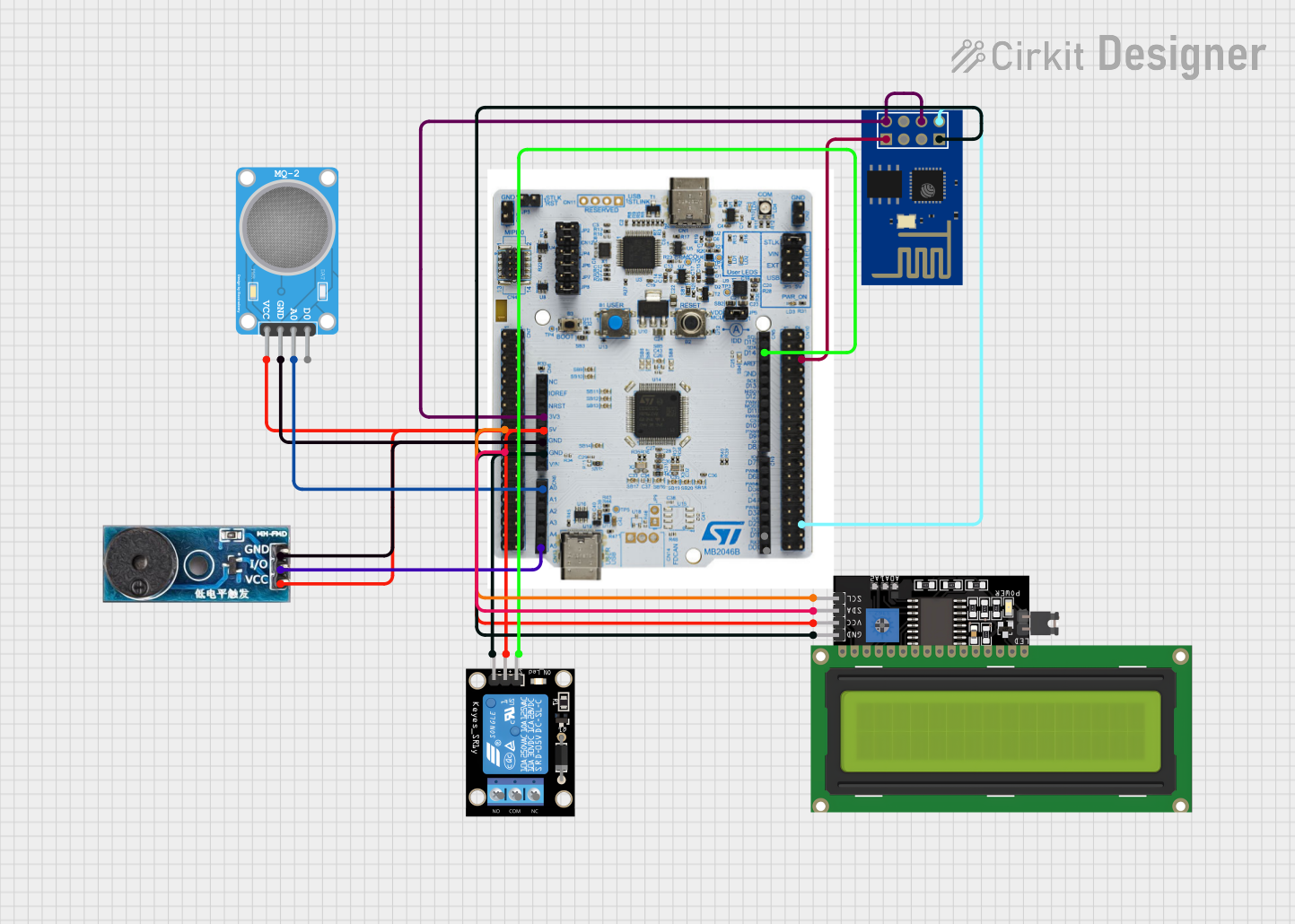
 Open Project in Cirkit Designer
Open Project in Cirkit Designer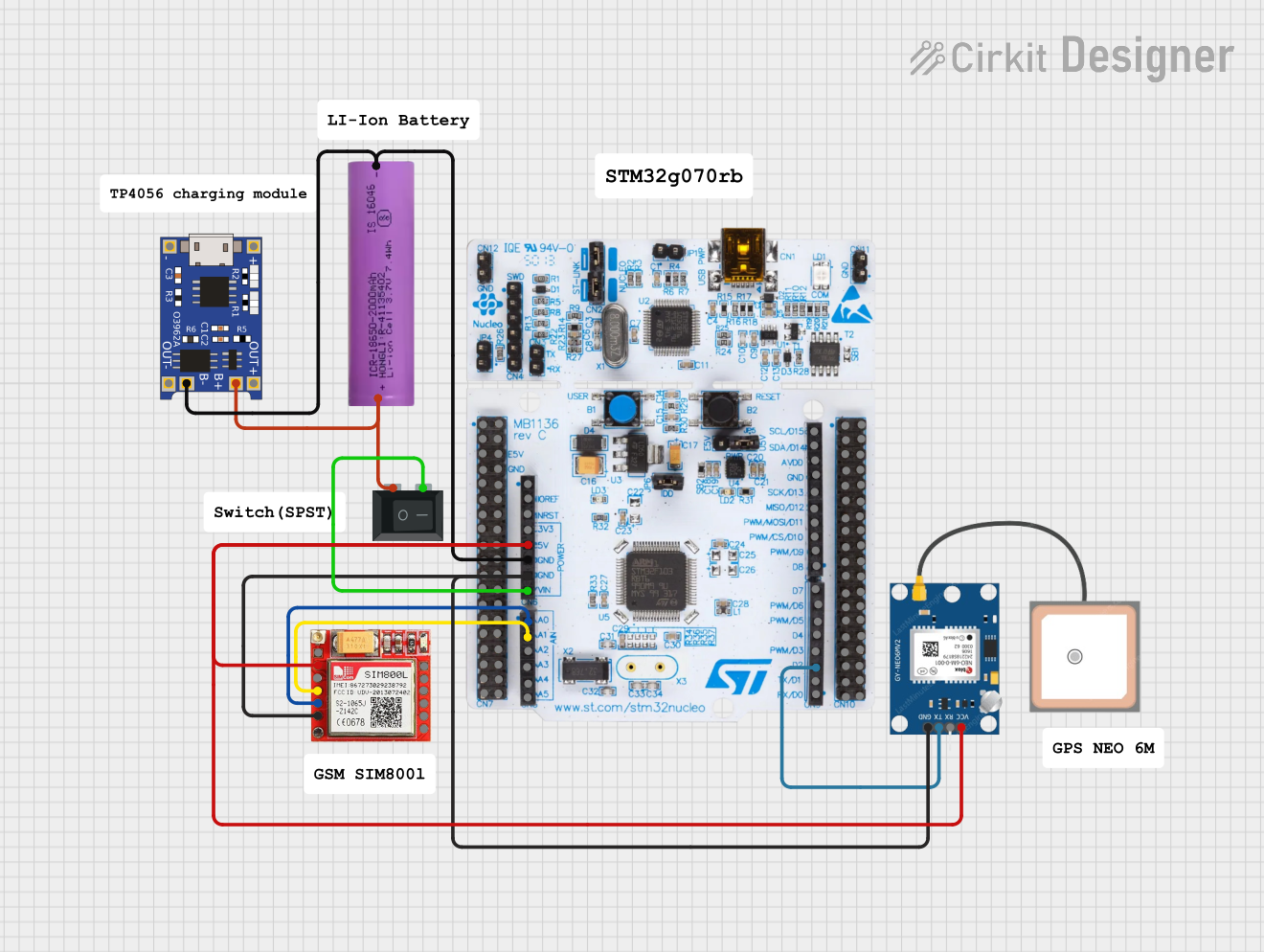
 Open Project in Cirkit Designer
Open Project in Cirkit Designer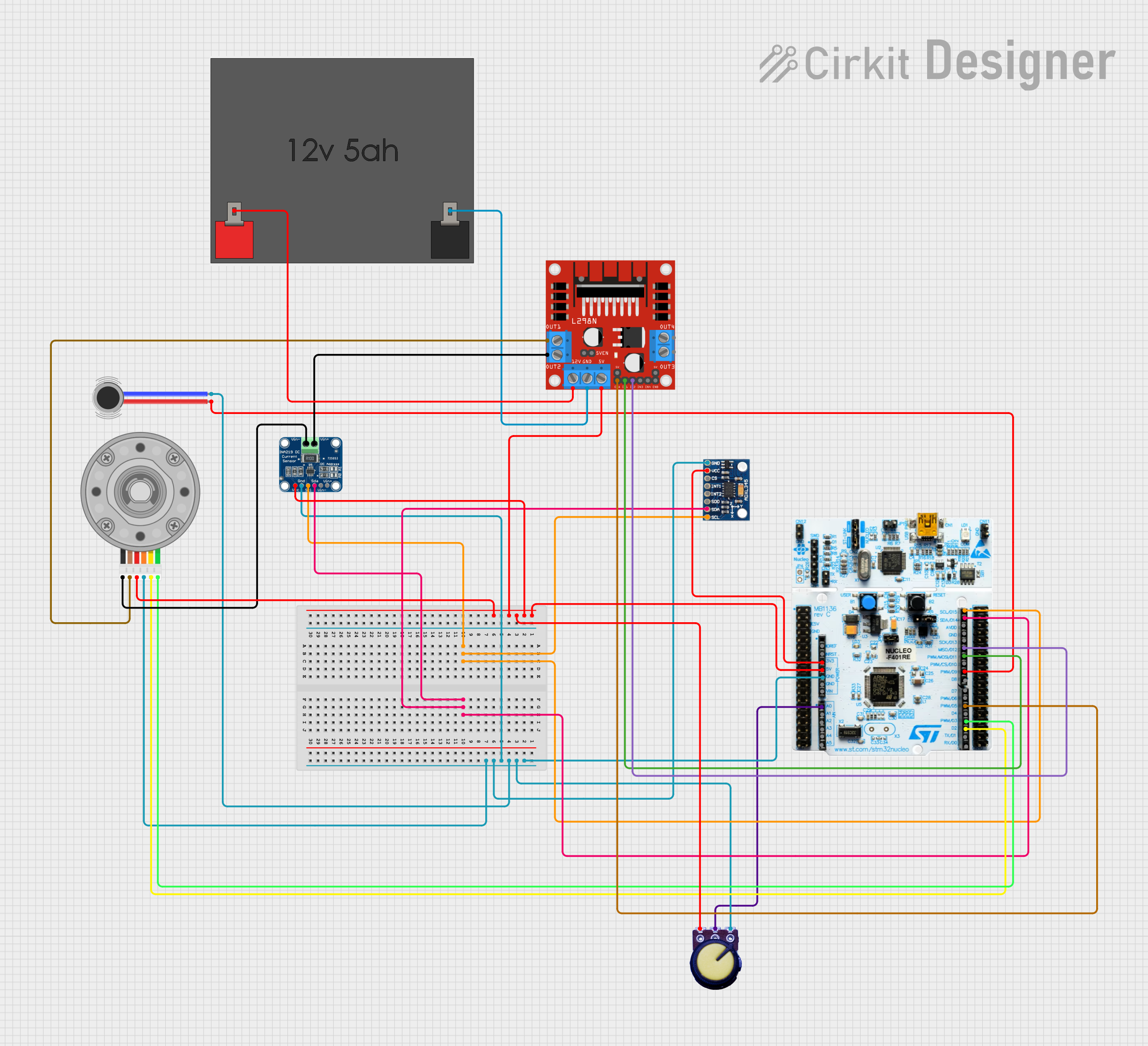
 Open Project in Cirkit Designer
Open Project in Cirkit DesignerExplore Projects Built with NUCLEO-F439ZI

 Open Project in Cirkit Designer
Open Project in Cirkit Designer
 Open Project in Cirkit Designer
Open Project in Cirkit Designer
 Open Project in Cirkit Designer
Open Project in Cirkit Designer
 Open Project in Cirkit Designer
Open Project in Cirkit DesignerCommon Applications and Use Cases
- Industrial automation and control systems
- IoT (Internet of Things) devices and gateways
- Robotics and motor control
- Data acquisition and processing
- Prototyping for consumer electronics
- Educational and research projects
Technical Specifications
Key Technical Details
| Feature | Specification |
|---|---|
| Microcontroller | STM32F439ZI (ARM Cortex-M4, 32-bit, 180 MHz) |
| Flash Memory | 2 MB |
| SRAM | 256 KB |
| Operating Voltage | 3.3V (core) / 5V (I/O via USB or external power supply) |
| Communication Interfaces | USB OTG, Ethernet, UART, I2C, SPI, CAN, and more |
| GPIO Pins | 114 (via Arduino Uno V3 and ST morpho connectors) |
| Clock Speed | 180 MHz |
| Debugging | Integrated ST-LINK/V2-1 debugger/programmer |
| Expansion Options | Arduino Uno V3 connectors, ST morpho connectors |
| Power Supply Options | USB, external 5V, or VIN (7-12V) |
| Dimensions | 102 mm x 68 mm |
Pin Configuration and Descriptions
The NUCLEO-F439ZI provides access to its GPIO pins through Arduino Uno V3 connectors and ST morpho connectors. Below is a summary of the pin configuration:
Arduino Uno V3 Connector Pinout
| Pin Name | Functionality | Description |
|---|---|---|
| A0-A5 | Analog Input | 6 analog input pins |
| D0-D13 | Digital I/O | 14 digital I/O pins (D0-D1 for UART) |
| 3.3V | Power Output | 3.3V power supply |
| 5V | Power Output | 5V power supply |
| GND | Ground | Common ground |
| VIN | Power Input | External power input (7-12V) |
ST Morpho Connector Pinout
| Pin Name | Functionality | Description |
|---|---|---|
| PAx-PHx | GPIO Pins | General-purpose I/O pins |
| VDD | Power Supply | 3.3V power supply |
| GND | Ground | Common ground |
| NRST | Reset | Microcontroller reset pin |
| OSC_IN | External Clock Input | Input for external clock source |
| OSC_OUT | External Clock Output | Output for external clock source |
Usage Instructions
How to Use the NUCLEO-F439ZI in a Circuit
Powering the Board:
- Connect the board to your computer via the USB cable for power and programming.
- Alternatively, use an external 5V power supply or VIN (7-12V) for standalone operation.
Programming the Board:
- Use the integrated ST-LINK/V2-1 debugger/programmer to upload code.
- Compatible IDEs include STM32CubeIDE, Keil MDK, IAR Embedded Workbench, and Arduino IDE.
Connecting Peripherals:
- Use the Arduino Uno V3 connectors for shields and modules.
- Use the ST morpho connectors for advanced GPIO access and custom peripherals.
Running the Code:
- After uploading the code, the board will automatically reset and execute the program.
Important Considerations and Best Practices
- Ensure the board is powered correctly to avoid damage. Use only one power source at a time (USB, 5V, or VIN).
- Avoid exceeding the GPIO pin voltage limits (3.3V logic level).
- Use decoupling capacitors when connecting external components to reduce noise.
- For Ethernet applications, ensure proper grounding and shielding to avoid interference.
- Use the STM32CubeMX tool to configure peripherals and generate initialization code.
Example Code for Arduino IDE
Below is an example code to blink an LED connected to pin D13:
// Blink an LED on pin D13 of the NUCLEO-F439ZI board
void setup() {
pinMode(13, OUTPUT); // Set pin D13 as an output
}
void loop() {
digitalWrite(13, HIGH); // Turn the LED on
delay(1000); // Wait for 1 second
digitalWrite(13, LOW); // Turn the LED off
delay(1000); // Wait for 1 second
}
Troubleshooting and FAQs
Common Issues and Solutions
The board is not detected by the computer:
- Ensure the USB cable is functional and supports data transfer.
- Check if the ST-LINK driver is installed on your computer.
- Try connecting to a different USB port or restarting your computer.
Code upload fails:
- Verify that the correct board and port are selected in the IDE.
- Ensure no other application is using the ST-LINK interface.
- Reset the board by pressing the NRST button and try again.
Peripherals are not working as expected:
- Double-check the pin connections and configurations in your code.
- Use a multimeter to verify voltage levels on the pins.
- Ensure the peripheral initialization code is correct (use STM32CubeMX for assistance).
Ethernet or USB communication issues:
- Verify the physical connections (e.g., Ethernet cable, USB cable).
- Check the clock configuration in your code (e.g., HSE or LSE settings).
- Ensure the correct drivers are installed on your computer.
FAQs
Q: Can I use the NUCLEO-F439ZI with the Arduino IDE?
A: Yes, the board is compatible with the Arduino IDE. Install the STM32 core for Arduino to get started.
Q: What is the maximum current output of the 3.3V and 5V pins?
A: The 3.3V pin can supply up to 500 mA, and the 5V pin can supply up to 800 mA when powered via USB.
Q: How do I reset the board?
A: Press the NRST button on the board to perform a hardware reset.
Q: Can I use external debuggers with the NUCLEO-F439ZI?
A: Yes, the board supports external debuggers via the SWD interface.
Q: Is the board compatible with Ethernet-based applications?
A: Yes, the board includes an Ethernet PHY and supports Ethernet-based communication.